Perhaps few understand the importance of a natural element as the Kukama indigenous community does, located in the Peruvian jungle. Even less so, the vital need to protect this element. An act of life or death. And it is that the Marañón River plays such a role for the Kukama.
Yes, we care about the environment. We recycle. Try as best we can to do our best to pollute as little as possible, but, although it is a topic that is constantly on our minds, we do not experience the consequences of pollution firsthand. We turn on the faucet and we have water. Open the refrigerator and we find food ready to be prepared. We cross the street and get what we need. But, this does not happen in places like the Amazon, which need the river to subsist. Probably we will never understand the implications of pollution for our lives as these communities do, who do not have access to drinking water and depend only on what the river provides. But that is no reason to be indifferent.
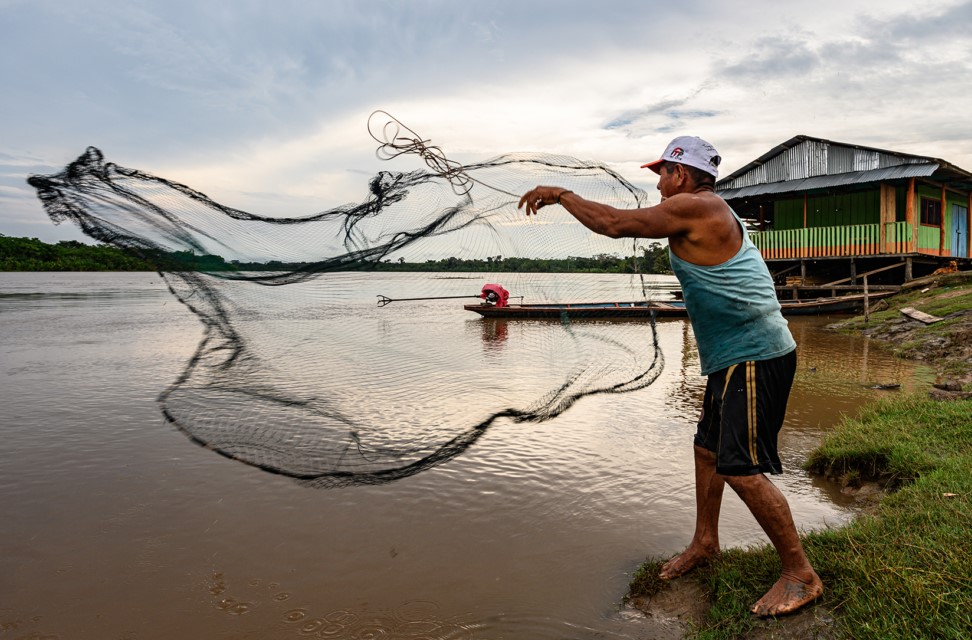
Imagine being thirsty and having to drink something mixed with toxic substances.Or having to bathe in black waters, spending hours hunting because the fish that used to be abundant are now scarce. Undoubtedly, these are visions we would never want to experience, and unfortunately, they are common situations for indigenous ethnic groups in the area.
That’s why a group of indigenous women decided to take action and have achieved a before and after in the protection of aquatic ecosystems in Peru, setting important precedents for the global environmental fight.
Here’s the story of this great achievement.
The Marañón River
The Marañón River is one of the longest in the Amazon rainforest. In fact, it is considered the second longest river in Peru, surpassed only by the Ucayali River. It is at the confluence of these two rivers where the Amazon River begins.
After originating amid snow-capped peaks and lakes of the Andean mountain range, the Marañón traverses 9 departments before reaching the Amazon rainforest.
Despite being the seventh largest basin in the Amazon, most of the Marañón River flows through the Andes, in narrow and steep slopes. Therefore, most of the river is not navigable. Navigation is only possible in the lower part.
In its basin live different indigenous communities, among which is the Kukama community, whose women lead the fight.
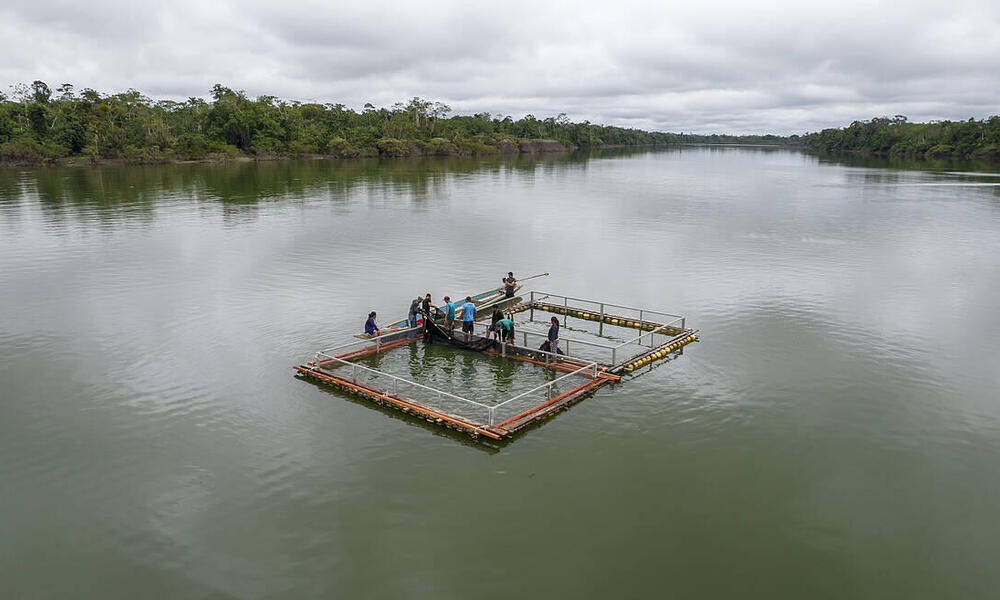
As we can imagine, it possesses a great biodiversity, with at least 11 species of endemic birds, according to WWF. Its waters are filled with nutrients and sediments that allow the growth of algae, the food of the fish consumed by the local population. Its basin, rich in minerals and hydrocarbons, is of special interest to various companies seeking to exploit its resources, as well as its energy potential. Many concessions have already been granted, making this river, which plays an important role in the Amazon ecosystem, one of the most affected by pollution.
The problems
Pollution in the Marañón has been occurring for decades, affecting not only the ecosystem itself but also the communities that live and subsist because of it.
From legal concessions granted without regulations or prevention measures to illegal activities, they constantly damage its fragile ecosystem. One of the most significant factors is systematic oil pollution. Oil wells can be found both north and south of the Marañón River.
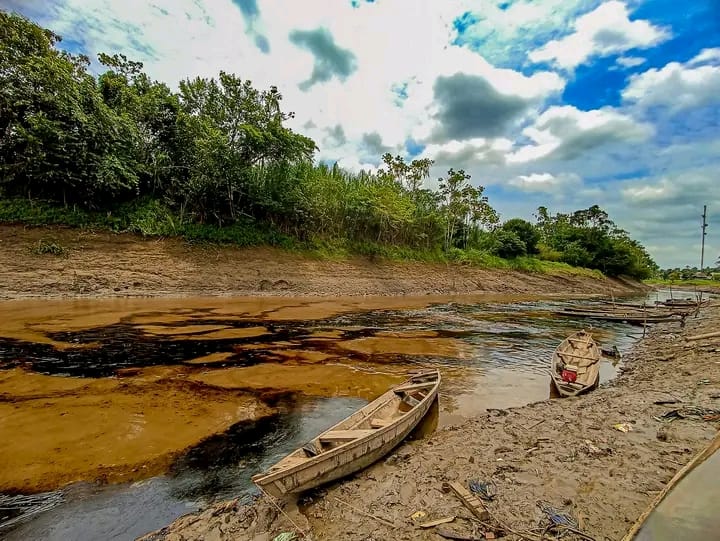
Thousands of barrels of crude oil are transported daily through a pipeline that connects the Amazon with the Peruvian coast, the longest in the country. This Nor-Peruvian Pipeline, operated by PetroPerú (a state-owned company), is attributed to multiple oil spills. From 1997 to 2019, more than 60 ecological disasters have been recorded in the area, primarily due to the poor condition and lack of maintenance of the pipeline.
However, only some of these spills come to light. There are many spills that go unnoticed, flowing beneath the water’s surface and even settling into sediment, killing fish and plants in the area and severely harming the local residents.
To this is added illegal gold mining, which contaminates one of the country’s most important water bodies with mercury and other dangerous metals. There is a lack of access to clean water and sanitation systems, as there are no wastewater treatment plants in Amazonian cities.
The river would be further affected by the impact of infrastructure projects, including hydroelectric dams and the Amazon Waterway. Today, these projects, considered a risk by multiple organizations, are currently halted.
The consequences of pollution
The consequences of pollution threaten the life of the river and the communities, which already face multiple hardships. Not only do they find it more difficult to obtain food, as fish become scarce, but they also show health problems. The Kukama associate undiagnosed diseases and the death of several members of their community with the consumption of contaminated water. They suffer from malnutrition, deformities, abortions, allergies, skin discoloration, and cancer.
After witnessing and experiencing firsthand the consequences of pollution, and in the face of government inaction, the Kukama women decided to take legal action to safeguard their lives, those of their children, and the river.
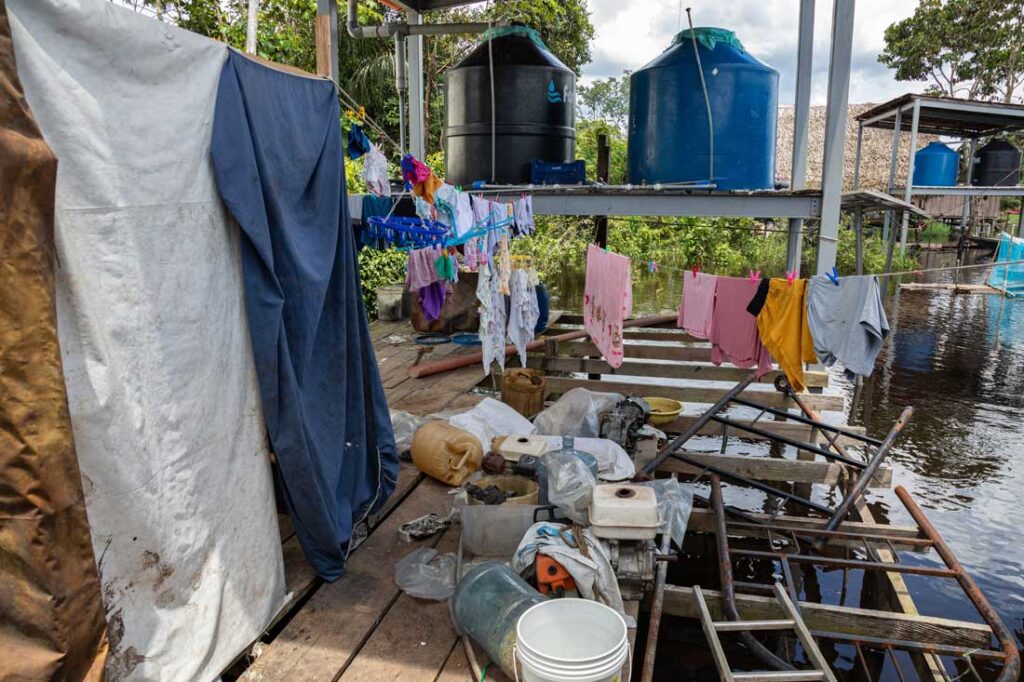
The Struggle
The ruling, issued in March of this 2024, represents a historic milestone for environmental protection and indigenous communities. After years of struggle, the Kukama women succeeded in having the Superior Court of Justice of Loreto, Peru, recognize the Marañón River as a legal entity, granting it fundamental rights for its conservation. As a rights holder, the State must recognize its value and ensure its protection, prevention, and conservation.
Kukama women have been leading the Huaynakana Kamatahuara Kana Women’s Federation since 2001, the year it was founded with the aim of promoting their rights and protecting their environment and culture. The federation, whose name means ‘working women,’ is made up of women from 28 indigenous communities in the Parinari district along the Marañón River, in the northern Amazon region of Peru.
The lawsuit, filed against the Peruvian state and the state-owned company PetroPerú in 2021, demanded recognition of the Marañón River (and its more than 15 tributaries) as a living being, an entity entitled to rights with intrinsic value, which, as with a legal person, must be protected by law.
This legal battle was supported by numerous national and international organizations dedicated to defending the rights of nature. It serves as an important precedent for achieving the protection of natural resources and indigenous populations.
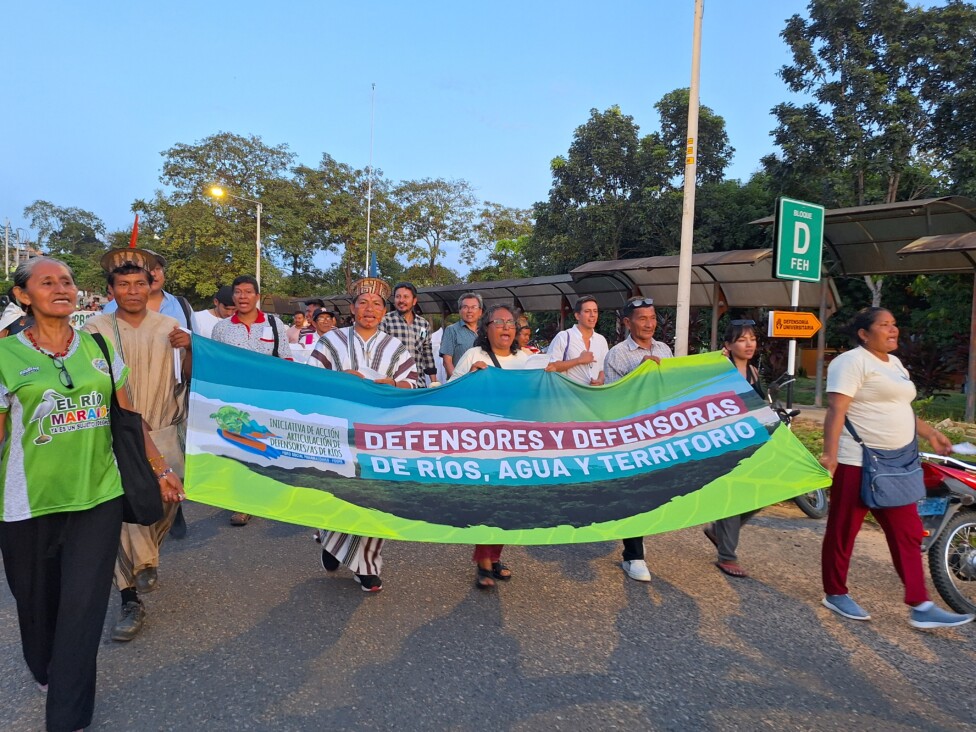
With the ruling, the river is recognized as an entity with the right to exist, flow, remain free from pollution, exercise its functions in the ecosystem, native biodiversity, restoration, regeneration of its natural cycles, conservation of its structure and ecological functions, protection, preservation, recovery, and representation.
In addition, the Kukama people are named as representatives, guardians, and defenders of the river and its tributaries, appealing to the intercultural component of the lawsuit, since by requesting the recognition of the river’s rights, they were also asking for the respect of the culture and worldview of their communities.
The ruling seeks to address over 30 years of spills and negligence. But it also signifies an approach to understanding the world of the Kukama people. For them, beyond being essential for the life and existence of the community, the river has a profound cultural and spiritual significance.The river is sacred.
The river as a living entity
Recognizing the river as a rights-holder not only grants protection to its resources and communities but also acknowledges and respects the worldview of indigenous peoples, often overlooked in legal matters. The culture of native communities may appear foreign to citizens of a globalized world, but we should not underestimate or dismiss them for that reason. In this sense, the ruling achieves a milestone by validating, respecting, and supporting Kukama culture, which perceives the river as a living being.
Understanding their worldview is important for comprehending the significance of the river in their lives, beyond its role as a source of water and sustenance. For them, the river is like a father, providing life to the living and the dead. And, like all beings, it has a mother: Purahua, a jungle spirit in the form of a gigantic boa.
For the Kukama Kukamira people, there exists a world beneath the river. There, spirits dwell, aiding the shamans in curing diseases of the population. They also take care of feeding the river’s fish, which in turn are the main source of food for the local families.
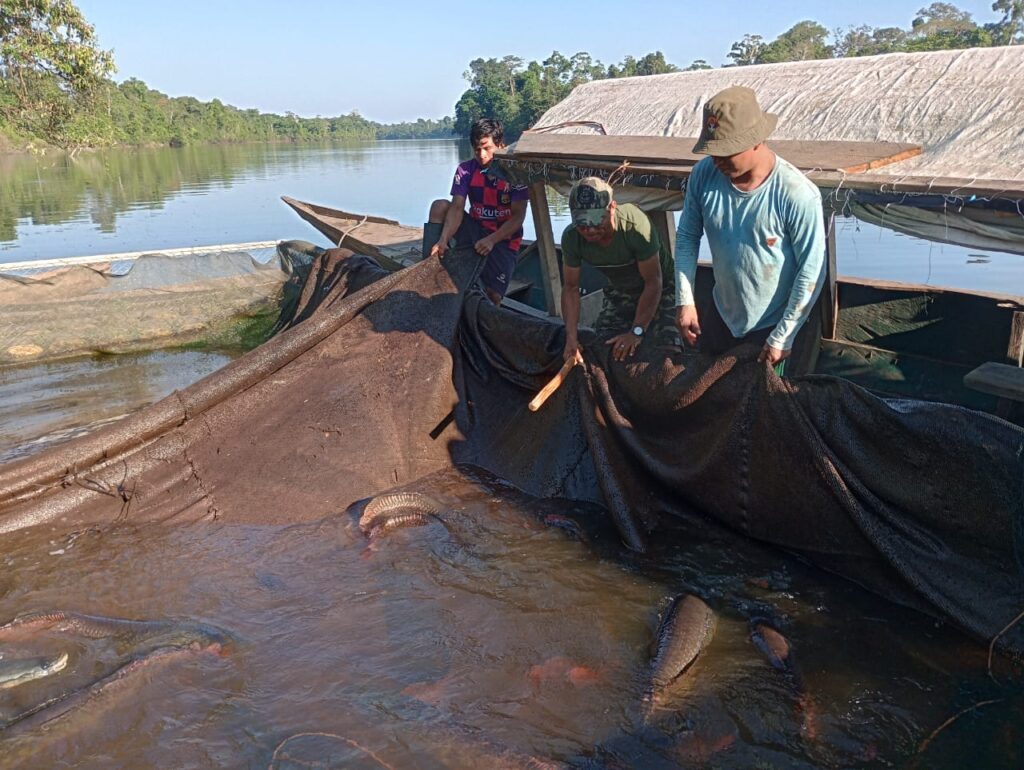
Likewise, the Marañón river shelters the river people. These are individuals who have suffered an accident in the river and whose bodies have not been recovered, leading to the belief that they have gone to live in a city beneath the river. They are called Karuara and visit their relatives in dreams or communicate with the help of shamans. The Karuara are also considered part of the community.
Thus, the spiritual value that the river holds for these communities cannot be separated. Both earthly life and the afterlife revolve around it. Therefore, the identity of these peoples is intrinsically linked to the Marañón and its tributaries, which are also the primary source of their existence.
Now what?
Just as it has happened before in Colombia, India, and New Zealand, today Peruvian laws have favored the well-being of nature. Ensuring its well-being also means ensuring the well-being of its citizens and of all human beings. Without nature, we cannot exist.
While this marks a significant first step in protecting the life of the river and its communities, we are yet to see the measures the relevant parties will take, the timeframe for action, and how effective they will be.
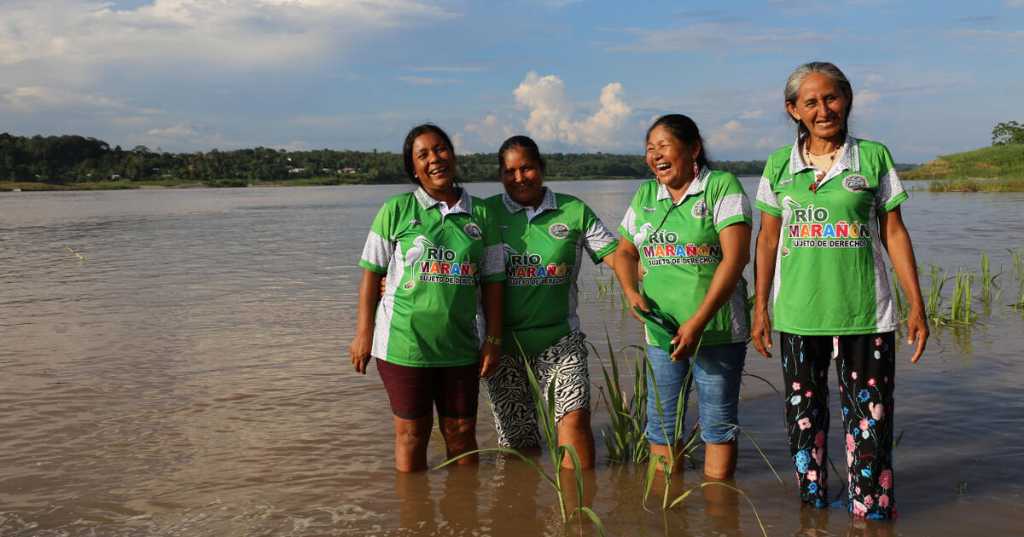
All the entities sued have filed appeals considering it unconstitutional. Thus, they request that it be declared inadmissible.
As a first-instance judgment, there is a risk that, following the appeal by the defendants, the second-instance court may rule in their favor, overturning the previous declaration. As of the date this article was written, the second-instance hearing has not yet taken place. Therefore, let us hope that the relevant authorities do not dismiss the ruling in favor of the river. Their decision will carry responsibility and define the future of life in the Marañón.
What is clear, regardless of the outcome, is that no one can take away from these women the courage and unwavering determination they have shown in their fight. Their example will serve as inspiration for us to advocate for the protection of nature and life on Earth. But also, to go against the current and raise our voices in a world that seems unwilling to listen. They have faced not only state entities but also the sexism within their own communities. They fought to be heard where their opinions were not considered, organized themselves, decided to take action for themselves, and now they lead the legal defense of their ancestral territories.
Now, they have the floor in the fight for the river, their lives, and those of their families. And they won’t back down. They still have much to say.





